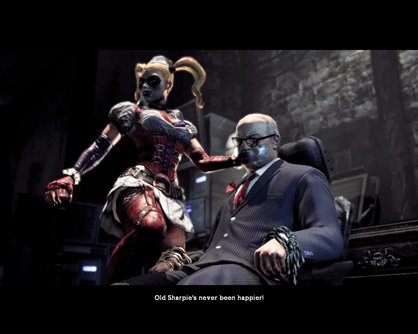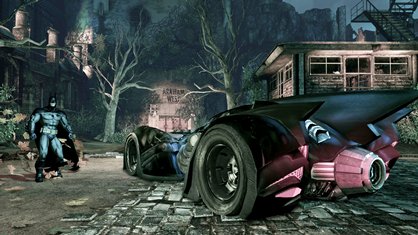Looking back at Batman: Arkham Asylum - Part 2
Even more secrets revealed on the rebirth of the Dark Knight
Rocksteady Games created a monster in Batman: Arkham Asylum, and senior gameplay programmer Paul Denning is so proud of their game spawn that he just couldn’t stop talking to us about it. He spilled so many truth nuggets from his talented maw that we had to split the interview into two parts. Here’s the second bit, complete with all sorts of interesting information about Batman’s return to the dance floor, how he nearly had the power to command motorboats, and even a story about how a big film company didn’t interfere with the game development process to a significant degree. You see, miracles do happen sometimes. For the first part of our interview,click here.
Do the Bat-tussi
“Originally, our forensic system was a lot bigger. We had four months prototyping at the beginning of the project and a lot of the stuff we did for forensics we ended up dropping or leaving out, because we didn’t really think it would fit with the way the game was going. If you look at the way the forensics works there’s not much of it in there and we felt that any time you needed to learn a mechanic, it would almost be thrown away straight away because you’d be past that section.

“We also had rhythm action combat. This idea was that music was playing and Batman would fight him in time with music. As the camera would cut, a new guy would come in and you’d have to punch him on the beat to connect or you’d end up getting hit. If you had two guys running at you, you’d have to branch off into another piece of music that would seamlessly blend into a combo attack.
“We put all that in and we actually got it pretty far and it was looking pretty good, but it was also obvious that we were running out of places we could take it already.

“We also had this idea where you could pull boats around in the water with your bat claw. We had levels with lots of water where you were turning on valves to raise the water level up and down but we dropped that as well because we felt it slowed the pace right down, and it also involved mashing the buttons a lot.”
Bat Happy
Weekly digests, tales from the communities you love, and more
“When it was first announced that we were doing Batman, we were all called into a meeting and to some of us it was really a big surprise. There was instant hollering and whooping. There were some big Batman fans here who were really psyched and there were others who were into it a bit and thought it would be a pretty cool thing to work on. I had read some of the Batman material and seen all of the films but I didn’t know anywhere near as much as I do now. You get a bit of daunting feeling as well knowing that it could be huge.
“As the project went on and we started to really see what we were creating and we started believing that it was going to be huge. Then the pressure started to come from the outside. Once we saw on the forums how all the fans were getting excited, and Warner starting saying how good it was, the pressure increased.

“At the end when we were sprinting for the line and fixing bugs and tweaking gameplay, we all felt that we’d probably made the best game we possibly could. This is the best game I’ve ever worked on, and you never know, for a lot of people this could be the best game they ever work on.”
Core Ideas
“One of the first things that was drummed into us was thinking about Batman, like what are his core facets? So we wrote down all the things that made him great, all the things he’d do and wouldn’t do, and the gameplay all evolved from that.
“You start work on the things that are most important. So the things we prototyped first were the combat, the forensics and the predator stuff, and then as we went on we expanded on those and if somebody turned up with a good idea it went in.

“Some things were taken out and it did evolve as we went along. If you took a snapshot at the end of our prototype period, and then again at the end of the alpha, it looks completely different to the final version.
“We started in April 2007 so it took us roughly two years, including four months of preproduction time. It was tight and we didn’t start with a huge team, maybe 30-35 to start with and then grew from there.”


